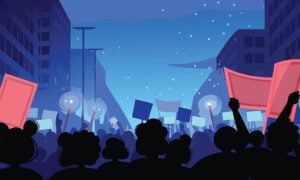
This Intermediate ESL lesson is heavily focused on how and why we use the first conditional. It also makes sure to give practical examples and activities. Students will learn how their actions have an impact on their future.
Warm-up
The lesson starts with an exercise to match parts of sentences (cause and effect). After that, the relationship of cause and effect is explained.
Grammar: condition, if/when
The student answers questions by using if and when. The signal phrases of cause and effect are then introduced (e.g. due to, as a result of, etc.). The student puts knowledge into practice by identifying signal phrases, causes, and effects in different sentence examples.
Another part of the practice is a discussion about the causes and effects of climate change, which serves as an introduction to the video section.
Video: climate change
After watching a NatGeo clip about climate change, the student answers multiple choice questions related to the video.
Grammar: first conditional
The structure and use of the first conditional are explained, as well as its three forms – affirmative, negative, and interrogative.
The student fills in the gaps using the first conditional structure.
Video: using the first conditional to talk about climate change
After watching a video that explains and uses the first conditional to talk about climate change, the student completes sentences mentioned in the video, and matches events with consequences.
In the end, the student makes a story using only the first conditional, starting with the sentence If I win the lottery tomorrow, I will…

Civil Unrest
This C2-level lesson uses civil unrest as a thematic framework to…

The Drive to Succeed
This C1 reading practice lesson explores the complex psychology of motivation…

The Oversharing Epidemic
In this Proficiency speaking practice lesson, students explore the phenomenon of…


